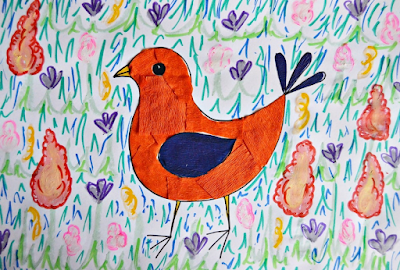What will you notice if it is finished?
Gilbert Stuart
*(notes for substitute teacher) Students came up with many reasons an artists may not finish a work of art. Some said, the artist may have lost interest, the artist may have forgotten about it, the artist might not have liked how it was turning out and started new...can you think of some reasons these are unfinished?
These are some unfinished paintings and will not be finished because the artists are no longer living.
Jan van Eyck
Gustav Klimt
Look at this bulldog by Henri de Toulouse Lautrec, it is clearly unfinished or was in progress.
Let's look at Patrick Dougherty's work!
In progress is kinda like being in the middle of your project. This is where you can make decisions, changes, add detail and consider what your next steps will be.
Let's look at Patrick Dougherty's finished work. What do you notice that tells you his work is complete?
Sometimes the artist meant for the art to look incomplete...it was done intentionally-- on purpose.
Paul Cezanne did a series of paintings that look unfinished but he actually wanted your eyes and mind to fill in the blanks.
and sometimes artwork can be over finished or over worked. It can look muddy, too busy or the focal point is lost. These are not wrong. Over worked art tends to happen in the painting studio.
Do these art works look finished? If so, what did the artist do to make them look complete?
What feedback would you give these artists to help them finish their art?
What advice would you give this sculptor to "transform" the materials they used to construct this art?
The closer a work gets to finished, it might be harder to tell if it's done.
Carefully mounting your work to construction paper and signing your piece is one way to make your art appear complete.
How will you know your work is complete?
Don't forget that
transforming materials is one way to know if your art is
finished.
|
|
|






























































